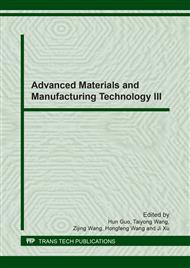p.252
p.261
p.271
p.279
p.293
p.303
p.312
p.323
p.333
Feed Optimization of Cycloidal Bevel Gear Format Cutting Based on Equal Cutting Area
Abstract:
When machining the cycloidal bevel gear on the CNC machine tool, the cutting force is gradually increased with the increase of the cutting depth when the feed speed of the cutter head is constant. The fluctuation of the cutting force is easy to cause the spindle vibration, reduce the surface quality. The off-line control is mainly used to optimize the NC code, and the cutting feed in the NC code is segmented according to the corresponding optimization algorithm and the constraint condition. When the spindle speed is 90 rpm, constant feed 40 mm/min, the cutting force of the volatility of 127.45%. When the feed rate is reduced from 50 mm/min to 26mm/min, the fluctuation rate of the cutting force is 46%. The variable feed control can effectively reduce the amplitude fluctuation of the cutting force.
Info:
Periodical:
Pages:
293-302
Citation:
Online since:
February 2018
Authors:
Price:
Сopyright:
© 2018 Trans Tech Publications Ltd. All Rights Reserved
Share:
Citation:


